The favorite holiday for travel lovers is approaching, so if you’re waiting for a sign to begin your adventure, Tourism Day in Peru is the perfect date. This September 27th, you can celebrate what we’re most passionate about: discovering new places, living authentic experiences, and connecting with unique cultures. And we’re not just passionate about it because we’re Peruvian, but because we celebrate you! In Peru, this holiday doesn’t go unnoticed: cities and communities are filled with music, dance, food fairs, and special activities that invite you to explore every corner of the country.
In this post, we’ll tell you all about day tourism in Peru so you can enjoy it to the fullest, from must-see classics like Machu Picchu and Lima, to lesser-known but equally fascinating spots. Get ready to be inspired, plan your itinerary, and celebrate by traveling, because on this day, tourism becomes a celebration that unites us all.
When is world tourism day?
Every year on September 27th, World Tourism Day is celebrated worldwide. This date was established by the World Tourism Organization in 1980 to highlight the importance of tourism in the economic, cultural, and social development of nations. On this day, fairs, festivals, conferences, and various activities are held in different countries to promote sustainable tourism, respect for local cultures, and the preservation of natural heritage.
History of tourism day
The history of international day dates back to the 1970s, when tourism boomed and the United Nations began to recognize it as the future engine of global economic development. That same year, the WTO statutes were approved, establishing the framework for treating tourism as a matter of international cooperation. Ten years later, in 1980, the now recognized first tourism world day was celebrated. Since then, each edition focuses on an annual theme, covering guidelines on various aspects of tourism, such as technological innovation, inclusive growth, sustainable tourism, and green investment.
What is the theme of world tourism day 2025?
This year, the World Tourism Organization (WTO) has chosen the inspiring theme “Tourism and Sustainable Transformation,” highlighting how travel not only connects us to new landscapes and cultures, but can also be a powerful tool in achieving the Sustainable Development Goals (SDGs) by 2030. The official celebration will take place in the historic city of Melaka, Malaysia, from September 27 to 29. Events will unite leaders and communities to learn and promote tourism that respects cultural identity, protects the environment, and generates a positive impact on local economies.
Tourism day around the world
Every September 27th, the world becomes a giant stage to celebrate the most popular travel destinations. From the tea fields of Japan, where visitors enjoy freshly brewed tea while chatting with local farmers, to the sandy shores of India, alive with dazzling sand sculpture competitions and colorful festivals. In South Africa, national parks and historical monuments also fill the festive atmosphere, and around the world, different celebrations are held to introduce tourists to each country’s local culture.
In Peru, the day comes alive with a unique blend of music, dance, and pure joy. Imagine the streets of Cusco, Arequipa, Lambayeque, and Puno brimming with vibrant parades, traditional costumes, and the delicious aroma of local dishes. Along the tranquil shores of Lake Titicaca, the Llachón community invites visitors to immerse themselves in their world, sharing dances, stories, and traditions that will make you feel less like a tourist and more like an old friend.
You might be interested: Visiting Peru in September: Complete Guide
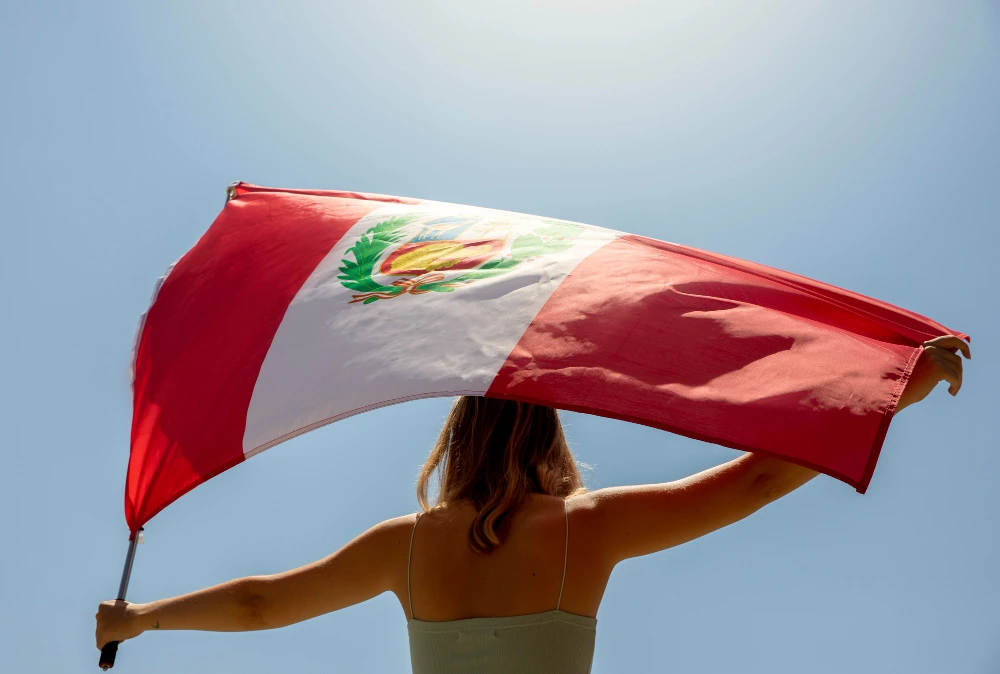
Why is world tourism day celebrated?
The purpose of World Tourism Day is to commemorate and celebrate the many contributions of tourism globally. Tourism not only stimulates trade and creates thousands of jobs in areas such as hotels, gastronomy, transportation, and local businesses, but also promotes the construction of facilities that improve people’s lives.
It boosts sectors such as hotels, gastronomy, transportation, and local businesses.
- It improves infrastructure and services in communities.
- It promotes cultural exchange and understanding between people.
- It motivates the preservation of cultural and natural heritage.
- It encourages responsible and sustainable tourism.
What is tourism day in Peru?
This year, Tourism Day in Peru will be celebrated on Saturday, September 27, with a festive atmosphere that will extend from the coast to the mountains and the jungle. The Ministry of Foreign Trade and Tourism, together with regional governments and local communities, has prepared a variety of activities to showcase the country’s cultural, natural, and gastronomic diversity to the world. In every corner, from the main squares to the most remote villages, traditional bands will play, hand-embroidered costumes will be on display, and dishes that tell ancestral stories will be sampled.
The importance of tourism in Peru
Tourism not only brings money to local communities, it also transforms lives. It is an engine that drives the economy, opens up new employment opportunities, and completely changes communities thanks to infrastructure such as roads, hotels, and services. But its true value lies in what it helps to preserve: jewels such as Machu Picchu, a symbol of national pride and one of the wonders of the modern world; the craft trades that remain alive thanks to the hands that weave, carve, and paint; and the traditions that endure in every dance, patron saint festival, and inherited recipe. Every visitor who arrives takes a piece of Peru with them… and leaves a little bit of themselves behind in its people.
You might be interested: Festivals in Cusco month by month
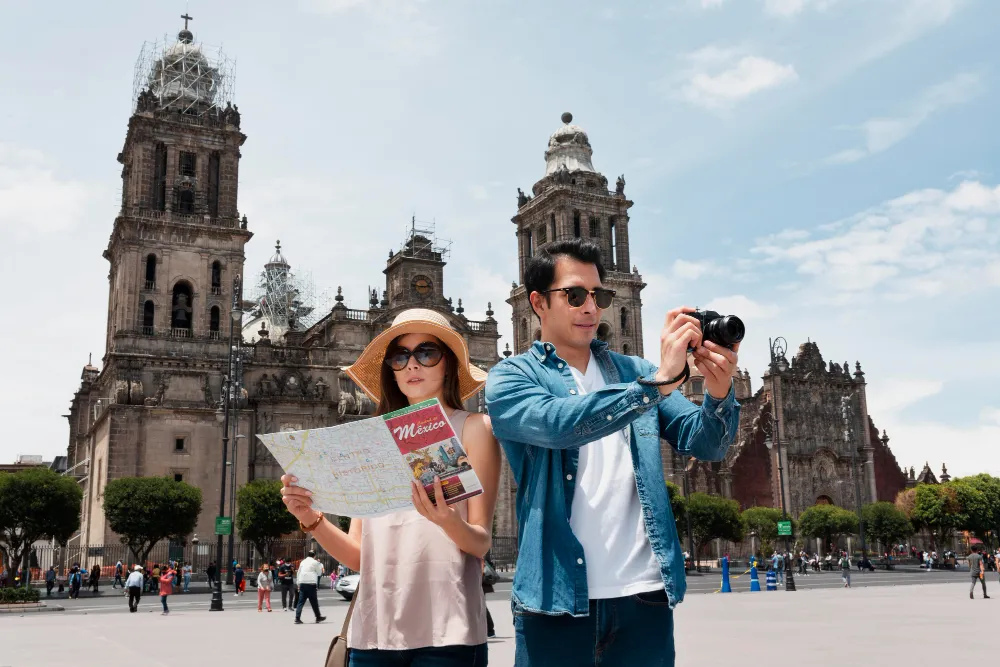
6 Attractions to visit on tourism day in Peru
Ready to celebrate Tourism Day in Peru with the best destinations? This September 27th, you can’t consider yourself a true world traveler if you don’t visit the ancient land of the Incas. This month, it opens its doors to unique experiences. If you’re looking to celebrate by traveling, here are six must-see places to enjoy this day.
1. Machu Picchu, Cusco
The Andean jewel and wonder of the world becomes the epicenter of special celebrations during World Tourism Day. MINCETUR (Ministry of Tourism and Cultural Heritage) and PROMPERÚ (Promprú) joined the celebrations on September 27th through a variety of activities held in various regions of the country. Machu Picchu is one of the destinations offering unique cultural events, preferential rates, and folklore presentations that enrich the visitor experience. The Inca citadel is illuminated with ancestral ceremonies and interpretive activities that connect tourists with Andean spirituality, while local authorities organize parades and craft fairs in Aguas Calientes.
What to see in Machu Picchu
The Intihuatana (Inca Sundial) is the sacred carved stone that functioned as an astronomical observatory and is considered the spiritual heart of the citadel. During the solstices, the shadow disappears completely at noon.
The Temple of the Sun is a semicircular structure built on a sacred rock, with windows perfectly aligned to capture the sun’s rays on important ceremonial dates.
Huayna Picchu is the young mountain that rises behind the citadel, accessible via a steep trail that offers spectacular panoramic views of the entire archaeological complex.
You might be interested: 7 National Parks in the Amazon
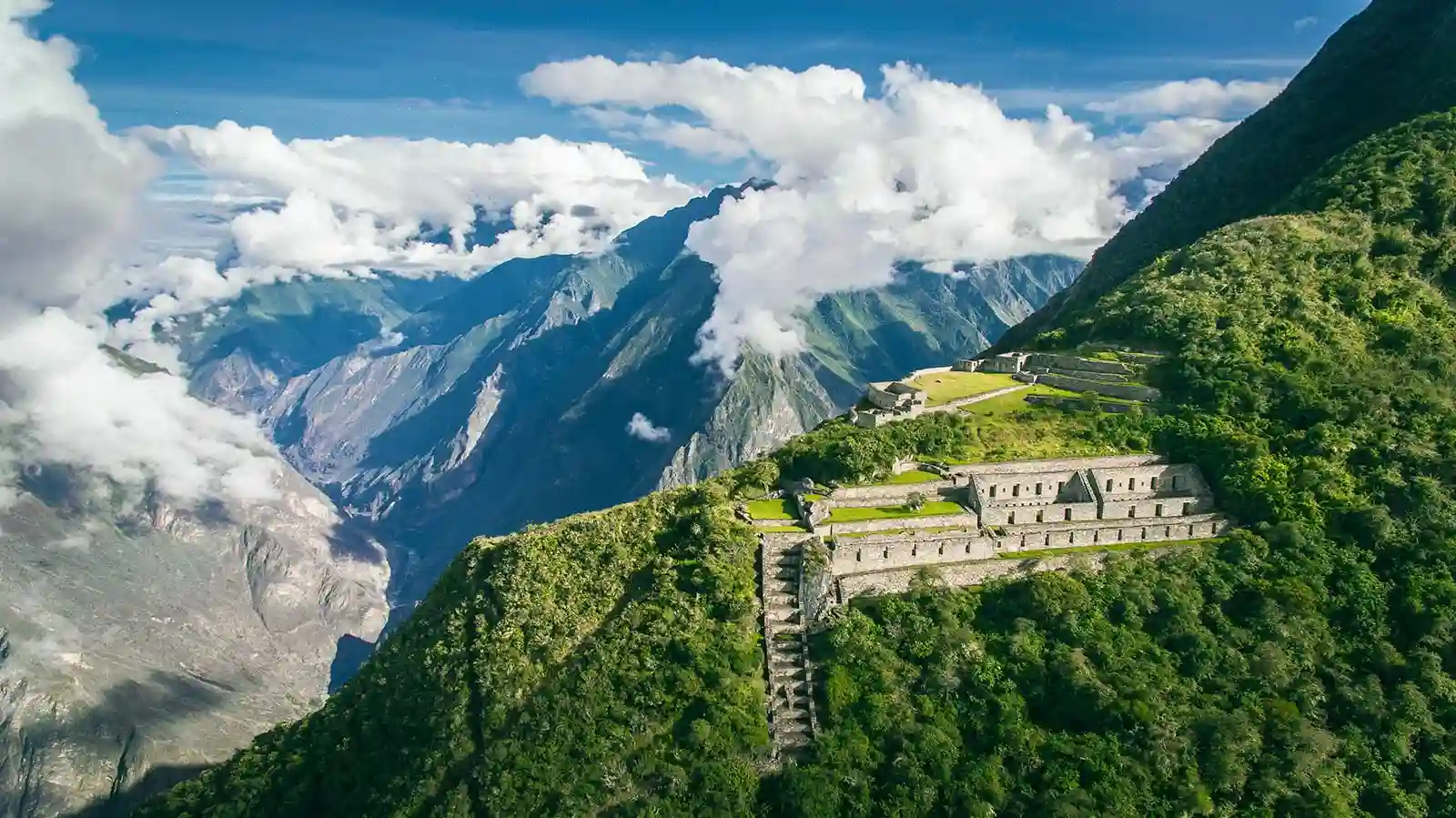
2. Choquequirao, Cusco
Known as “the sacred sister of Machu Picchu,” this archaeological gem has gained international recognition for its authenticity and pristine landscapes. The Ministry of Foreign Trade and Tourism (MINCETUR) and the Private Investment Promotion Agency (PROINVERSIÓN) held a workshop for journalists in Cusco to discuss the scope of the project “Improving Public Tourism Services in…” During World Tourism Day, authorities organize special expeditions with expert guides and Pachamama ceremonies at the archaeological site. It is the perfect destination for adventurers seeking a more intimate and less commercialized experience, where a multi-day trek becomes a modern pilgrimage to one of the last Inca strongholds.
What to see in Choquequirao
Main Llaqta: The main urban complex spreads over several terraces, including residences of the Inca elite and administrative centers with architecture similar to Machu Picchu.
Temple of the Llamas are a unique in the Inca world, it features white stone mosaics forming llama figures on the walls of the terraces, demonstrating the importance of livestock to the Incas.
Pinchaunuyoq is the area of sacred springs where purification rituals were performed, with channels of crystalline water flowing from natural springs.
Apurímac Viewpoint: A strategic point offering spectacular views of the Apurímac River canyon, one of the deepest in the Americas, and the surrounding mountainous landscape.
3. Paracas National Reserve, Ica
A coastal paradise that combines dreamy beaches with exceptional marine biodiversity. During World Tourism Day, the reserve offers free admission and special activities such as guided marine wildlife viewing, conservation talks, and boat tours to the Ballestas Islands. Sea lions, Humboldt penguins, and pink flamingos take center stage in this natural spectacle, while rock formations such as La Catedral (previous to the 2007 earthquake) and the Candelabro geoglyph preserve the mystery of pre-Columbian cultures. The combination of desert, ocean, and wildlife creates a unique ecosystem in South America.
What to see in the Paracas National Reserve
Ballestas Islands: A marine wildlife sanctuary known as the “Peruvian Galapagos,” home to more than 200,000 sea lions, Humboldt penguins, cormorants, and pelicans.
The Candelabro: A mysterious 180-meter geoglyph engraved on a sand hill, visible from the sea, whose origin and purpose remain archaeological mysteries.
Red Beach: A unique beach in the world with reddish sand due to volcanic sediments.
You might be interested: Ecotourism in Amazon Rainforest of Peru
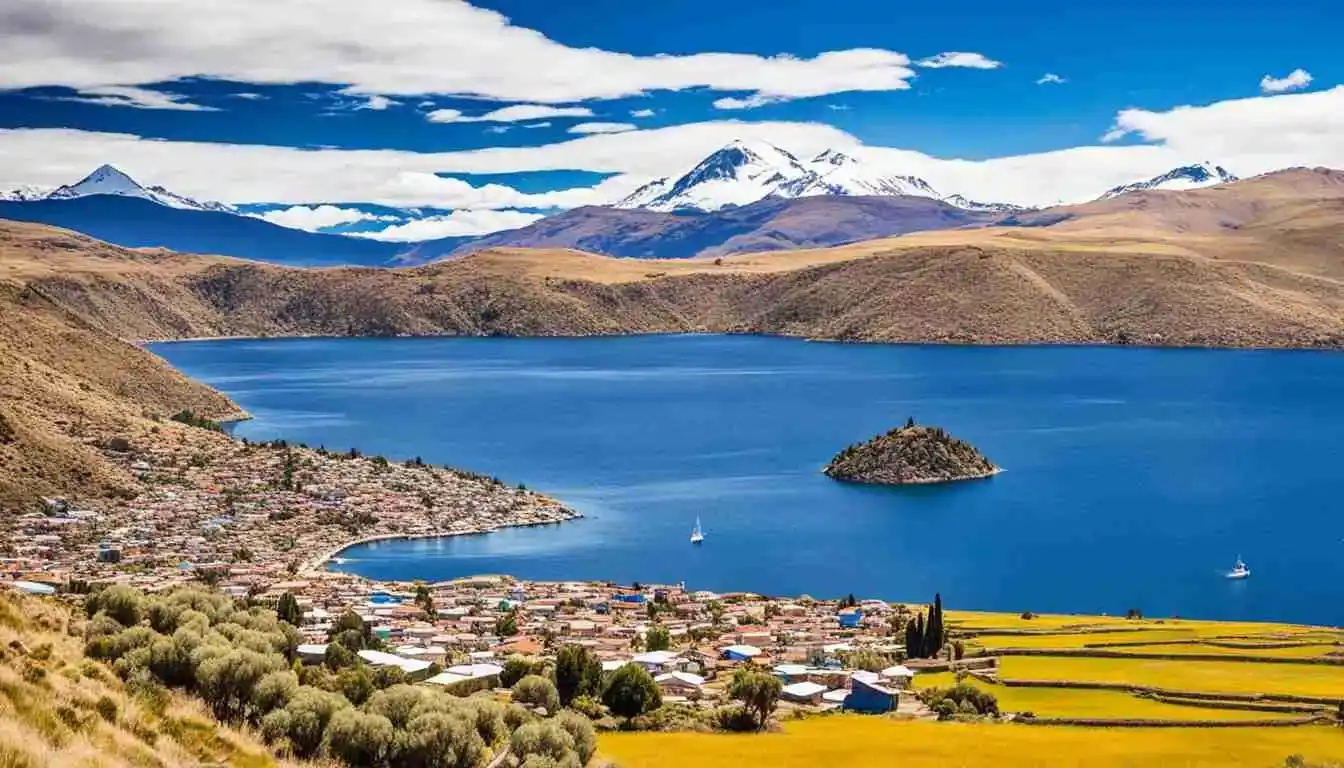
4. Lake Titicaca, Puno
The world’s highest navigable lake becomes a magical setting for experiential tourism during the World Tourism Day celebrations. The Uros, Amantaní, and Taquile communities organize special ceremonies where visitors participate in ancestral rituals, learn ancient weaving techniques, and share traditional lake cuisine. Reed rafts, artificial islands, and textiles with pre-Columbian iconography offer an authentic window into cultures that have kept their traditions intact for centuries. Sunsets over the sacred waters of Lake Titicaca, considered the birthplace of the Inca civilization, create unforgettable moments of spiritual connection.
What to see on Lake Titicaca
Uros Floating Islands: More than 60 artificial islands built entirely of reeds, home to families who have maintained this tradition for 3,700 years.
Amantaní Island: Known as the “Island of Love,” where local families welcome tourists into their stone homes, sharing traditional meals and ancestral ceremonies at the Pachatata and Pachamama temples.
Taquile Island: Famous for its UNESCO World Heritage textiles, where men weave and women spin, maintaining techniques dating back to pre-Inca civilizations.
Chucuito Fertility Temple: Archaeological site with more than 80 stone phallic representations, used in fertility ceremonies by ancient cultures.
Sillustani: Pre-Inca necropolis with chullpas (funerary towers) up to 12 meters high, built with gravity-defying engineering techniques.
Yavari: A British steamship from 1862, considered the oldest navigable vessel in the world, which operates as a floating museum of the lake’s naval history.
5. Nor Yauyos-Cochas Landscape Reserve, Lima-Junín
A natural paradise that represents the perfect escape from the city during World Tourism Day. This protected area offers free access and special activities such as guided hikes to spectacular waterfalls, landscape photography workshops, and meetings with high-Andean communities that maintain ancient livestock traditions. The turquoise lagoons of glacial origin, such as Piquecocha and Chuspicocha, reflect snow-capped peaks, creating landscapes that seem straight out of a fairy tale. The quinual forests, free-roaming vicuñas, and the purity of the high-altitude air make each trail an experience of reconnection with the pristine nature of the central Andes.
What to see in Nor Yauyos-Cochas
Piquecocha Lagoon: A turquoise water mirror at 4,270 meters above sea level, surrounded by snow-capped mountains and quinual forests, considered one of the most beautiful lagoons in the Peruvian Andes.
Cabracancha Waterfall: A 100-meter-high waterfall that plunges from limestone rock formations, creating a unique visual and acoustic spectacle in the mountain range.
Cañoncillo Stone Forest: Whimsical geological formations sculpted by erosion over millions of years, creating fantastic shapes among the high Andean grasslands.
Tanta Village: A traditional cattle-raising community that maintains ancestral alpaca and llama raising techniques, famous for its artisanal cheeses and natural fiber textiles.
6. Huascarán National Park, Áncash
The world’s highest tropical mountain range offers special benefits for visitors during World Tourism Day, including discounts on admission and free guided trekking routes. This mountain paradise is home to the snow-capped Huascarán Sur (6,768 meters), Peru’s highest mountain, along with glacial lagoons of impossibly colorful peaks like Laguna 69 and Llanganuco. Ancient glaciers, forests of Puya Raimondii (the world’s largest plant), and specialized Andean wildlife like the spectacled bear and the condor turn every expedition into an adventure to the last refuges of the Andean wilderness. High-altitude routes like Santa Cruz and Huayhuash attract world-class mountaineers.
What to See in Huascarán National Park
Laguna 69: A glacial lake with intense turquoise waters at 4,600 meters above sea level, surrounded by snow-capped peaks and considered one of the most spectacular one-day treks in the Andes.
Nevado Huascarán is the highest mountain in Peru, with its two peaks (South: 6,768 m and North: 6,654 m), is a supreme challenge for experienced mountaineers and a national symbol.
Llanganuco Lagoons are two twin lakes (Chinancocha and Orconcocha) of glacial origin with deep blue waters, surrounded by cinquefoil forests and accessible by road.
You might be interested: Amazon rainforest packing list
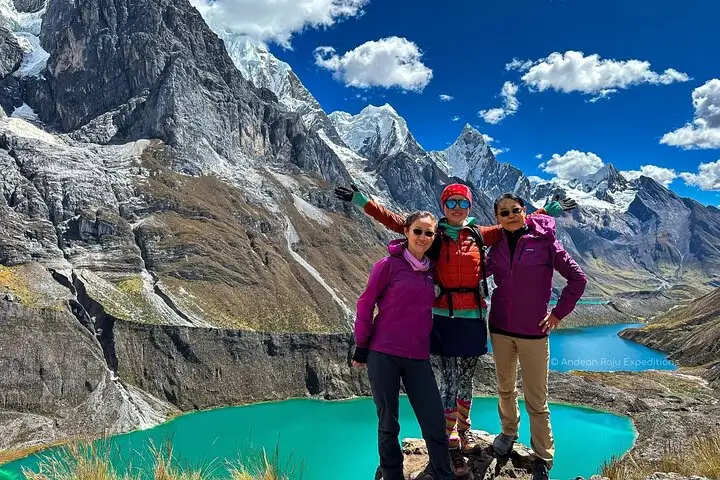
Special events and activities for Tourism Day
Tourism Day in Peru transforms the entire country into a vibrant showcase of cultural heritage, culinary excellence, and adventure tourism opportunities that go far beyond traditional sightseeing. This annual celebration opens exclusive access to archaeological sites, extends museum hours with special pricing, and creates unique experiences from Lima’s colonial streets to remote Amazon villages.
Cultural tours
Tours of Lima’s colonial historic center
“The City of Kings” is the classic place to explore Peru’s colonial history. Lima’s historic center is a UNESCO World Heritage Site. Guides explain the Spanish colonial and indigenous architectural history. Visit Lima Cathedral with intricate baroque altars and the Archbishop’s Palace with iconic wooden balconies. Discover how centuries of history shaped Peru’s current cultural identity.
Community workshops in the Sacred Valley
Authentic Workshop in Chinchero: Participate in an authentic workshop that preserves Inca weaving techniques for over 500 years. From the natural dyeing processes with cochineal and local plants to shearing and finished products, discover the ancestral symbolic meanings behind each traditional Andean textile pattern.
Amazonian indigenous cultural immersion
Experience the tourism day with Ese ‘eja communities who share ancient traditional knowledge of medicine and fishing. Participate in shamanic ceremonies, medicinal plant walks, and jungle survival techniques, and understand the deep spiritual relationships between Indigenous communities and the Amazon.
Pre-columbian archaeological tours in Trujillo
Explore the Moche and Chimú civilizations at the Huacas del Sol and Luna with expert archaeologists. Admire colorful, newly excavated murals depicting pre-Columbian mythology and sophisticated hydraulic systems. Learn about advanced metallurgical techniques that influenced Andean cultures for millennia.
Gastronomic fairs and food tours
Lima Central market
Browse the Central Market with local experts, discovering Peruvian biodiversity through exotic Amazonian ingredients. Taste fruits like camu camu and aguaje while learning about the unique nutritional properties of the jungle ecosystem. Watch traditional anticuchos being prepared and discover African influences in Peruvian coastal cuisine.
San Pedro market in Cusco
Explore the most authentic indigenous market in South America, discovering dozens of native potato varieties. Learn about ancient grains like quinoa and kiwicha, and try traditional purple corn chicha morada. Understand how extreme altitude and Andean microclimates create unique flavors.
Exotic fruits and amazonian river fish
Discover Iquitos markets with unique fruits and fish like the giant Amazonian paiche. Participate in traditional preparations using banana leaves and ancient earth ovens. Learn about the medicinal properties of jungle ingredients from indigenous guides who are experts in ethnobotany.
Adventure sports and ecotourism
Rafting on andean rivers
Seize this opportunity to navigate the mighty rivers of the Urubamba and Apurímac with certified guides, combining adrenaline and sport. You can also camp on the banks and visit remote Quechua communities accessible only by river.
Expeditions in the amazon canopy
Contribute to real scientific research in the Tambopata Reserve by climbing 40-meter observation towers. Participate in bird migration monitoring, jaguar camera traps, and ethnobotanical inventories. Stay in Tambopata lodges with solar power and rainwater harvesting systems.
Trekking in the cordillera blanca
Challenge yourself on multi-day hikes through tropical glaciers and crystal-clear alpine lakes with professional mountaineering guides. Explore remote valleys where condors soar over ancient glacial formations, creating otherworldly landscapes. Receive technical climbing instruction and specialized altitude acclimatization programs.
Sandboarding in the Huacachina desert
Experience sandboarding on massive dunes while learning about desert ecosystems that survive on minimal water. Participate in nighttime desert astronomy with perfect clear, dry sky conditions. Understand the adaptations of Nazca cultures to the extreme conditions of the Peruvian coastal desert.
You might be interested: Amazon Jungle Mysteries
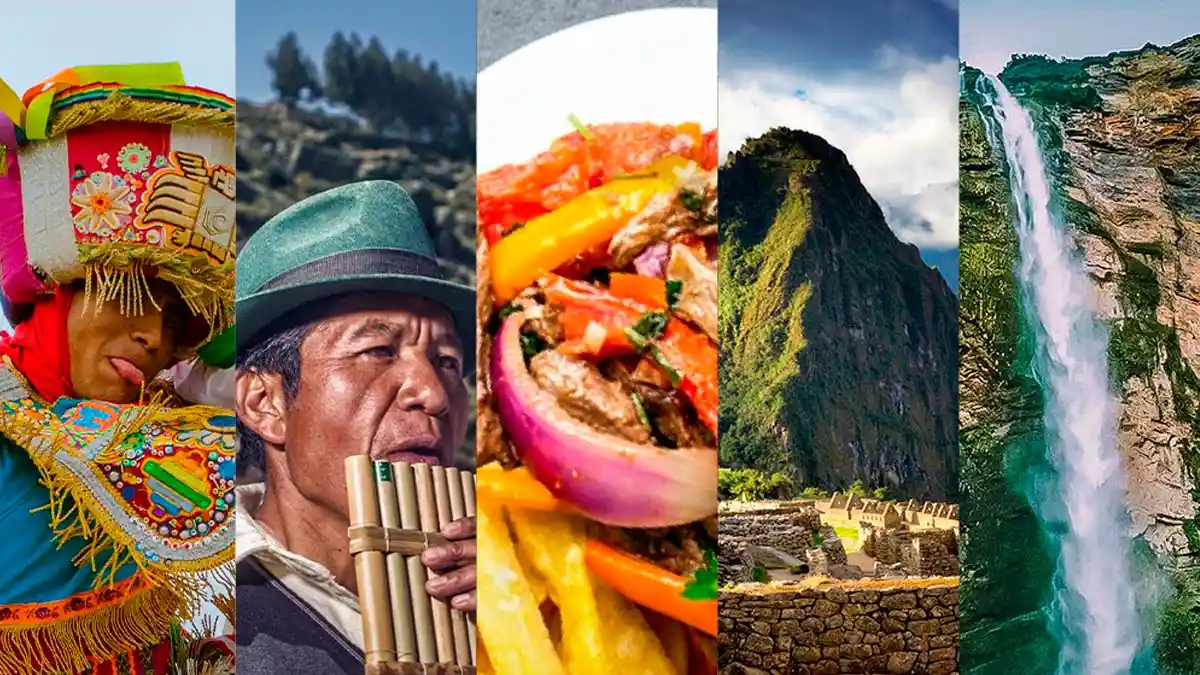
Travel tips for tourism day in Peru
- Book your tickets to Machu Picchu in advance because, believe me, with only 5,000 daily spots, getting tickets on the same day is almost impossible. During Tourism Day, demand skyrockets, so it’s best to book from home and hire a local guide who can truly tell you the stories you can’t find on Google.
- Be prepared for the dry Andean climate, which in September is perfect for the mountains, with sunny days and incredible clear views. However, nights can be freezing, especially above 3,000 meters, so don’t forget your thermal jacket because the cold of the Puna is unforgiving.
- Plan ahead for altitude sickness management because Cusco is at 3,400 meters, and altitude sickness doesn’t distinguish between experienced and first-time tourists. Arrive a day early, drink lots of coca tea, avoid alcohol for the first 48 hours, and don’t be embarrassed to buy oxygen at pharmacies if you need it.
- Keep your documentation and health in order with a passport valid for at least six months and check if your country requires a visa. If you’re going to the jungle, get vaccinated against yellow fever and hepatitis, and please purchase travel insurance because private hospitals here are expensive.
- Familiarize yourself with transportation options because although Peru is well connected by air and land, each region has its own unique features. For Machu Picchu, use PeruRail or Inca Rail; for long distances, prefer companies like Cruz del Sur; and in small towns, buses are your best friend.
- Prioritize your personal safety by using the common sense you would use in any major city in the world. Don’t display expensive items, use official taxis or Uber, share your itinerary with someone you trust, and always have the Iperú number (574-8000) handy, which is free 24/7.
- With these tips, you’ll enjoy Tourism Day stress-free and take home incredible memories. The most important thing is to go with an open mind and respect for our culture; the rest will follow as you go.
Conclusion on tourism day in Peru
After learning about all these incredible experiences that await you—from ancient weaving workshops in the Sacred Valley to scientific expeditions in the Amazon, from food festivals that awaken all your senses to adrenaline-pumping adventures that connect you with the purest nature, aren’t you already feeling that excitement about packing your bags? This September 27th, Peru dresses up to celebrate you, the traveler within you, the explorer who seeks authentic experiences and real connections. So take this as the sign you’ve been waiting for to travel during Tourism Day in Peru this year.



